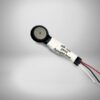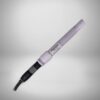Air quality monitoring is the process of measuring and analyzing the level of air pollution in a specific location.
The main components of air quality monitoring are the collection of data on various air pollutants such as PM, SO2, NO2, CO, and O3, and the use of weather monitoring systems (WMS) that provide real-time data on meteorological conditions such as wind speed, temperature, and humidity.
Weather stations play a critical role in air quality monitoring as they provide crucial meteorological data needed for accurate air pollution assessments. They help in predicting how pollutants will move, prevent the formation of harmful pollutants, and help in the calibration and validation of air quality monitoring equipment.
Policymakers can use air quality monitoring data to identify sources of air pollution and take steps to reduce emissions from sources such as vehicles or industrial plants. This can include implementing regulations, promoting alternative modes of transportation, or investing in cleaner technologies.
The main components of weather monitoring systems used in air quality monitoring are anemometers for measuring wind speed and direction, air temperature sensors for identifying changes in temperature, relative humidity sensors for measuring the water vapor content of the air, and barometric pressure sensors for measuring atmospheric pressure.




